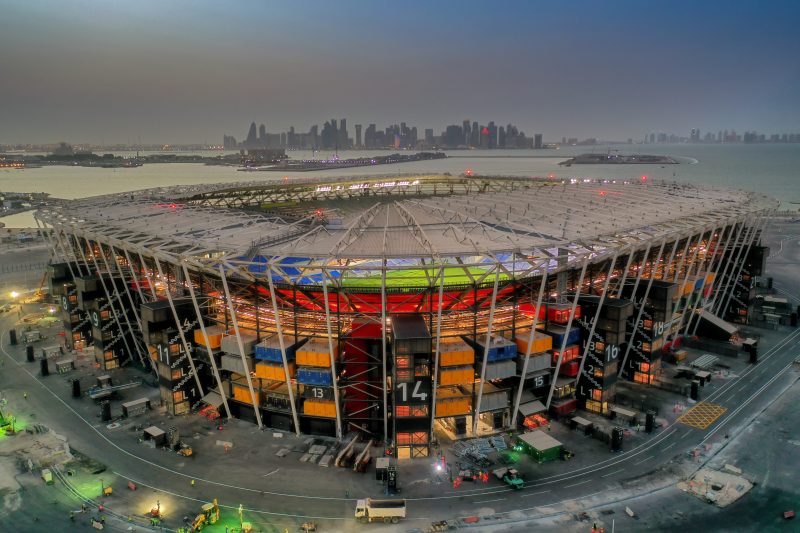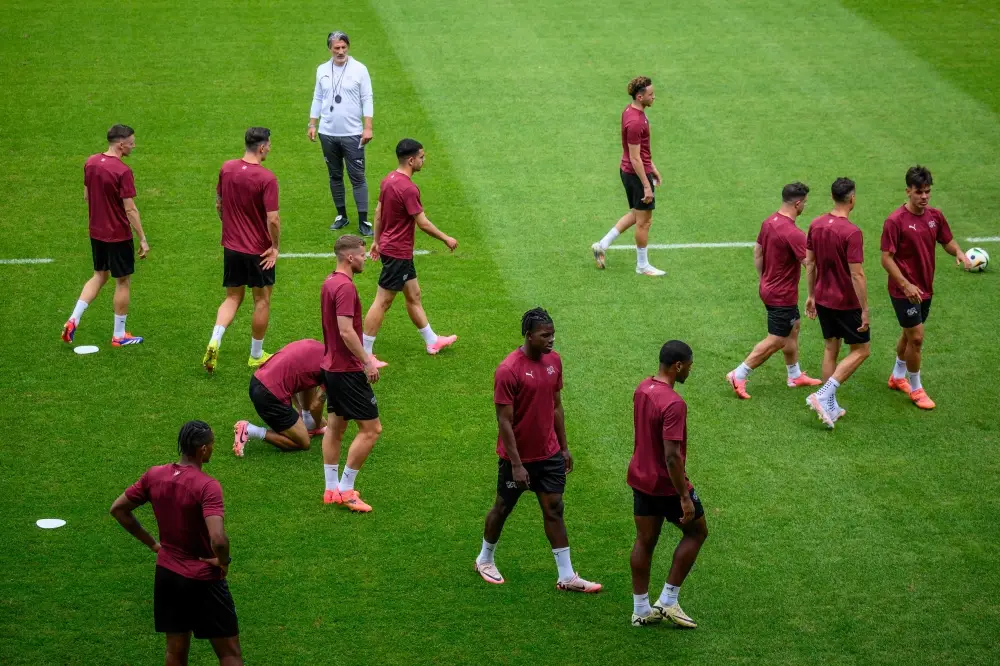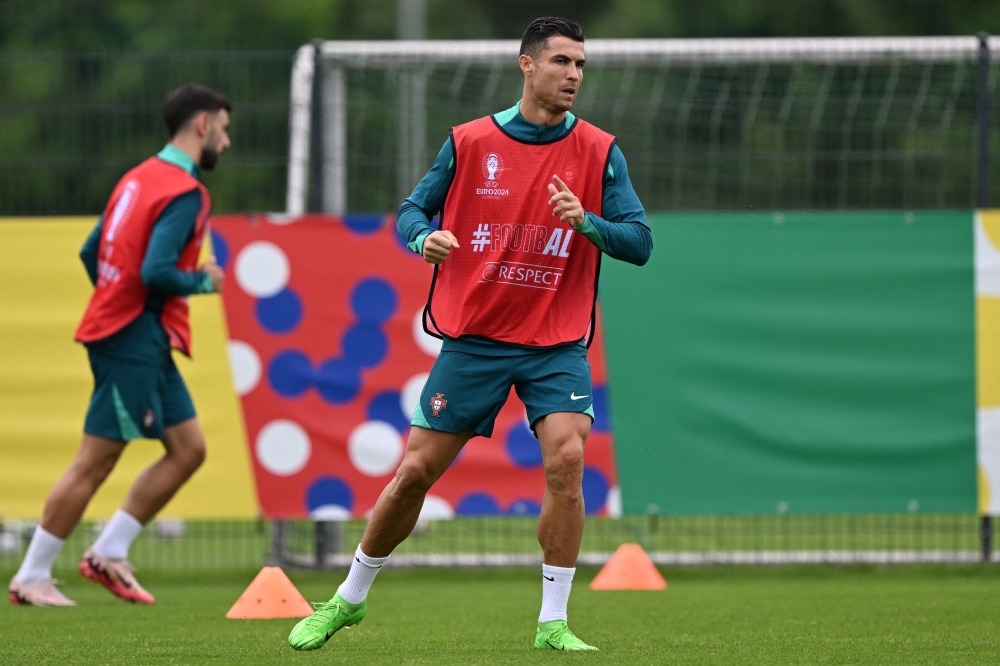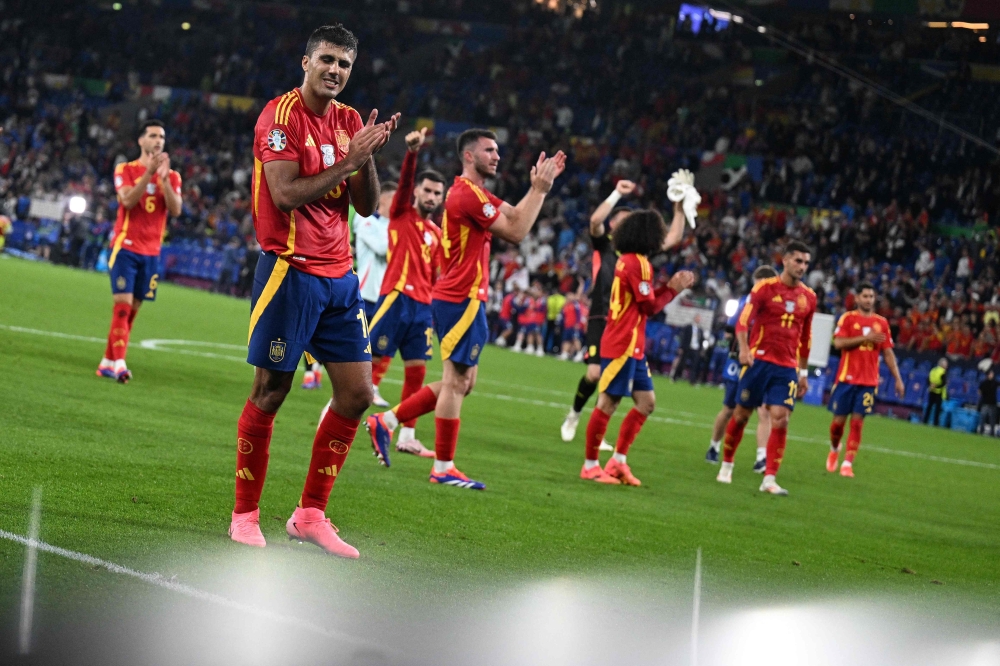Doha’s FIFA World Cup 2022 claims to be the first carbon-neutral World Cup in history, but is it achievable with the country’s current policies?
This year, all eyes are on Qatar as it promises the first ever carbon neutral World Cup in history, meaning emissions of carbon dioxide will be balanced or eliminated. According to organisers, the grand tournament will offer a ‘once in a lifetime’ sustainable experience for all football fans.
A new report by Carbon Market Watch, a not-for-profit organisation that works closely with the European Union, doubts the Gulf state will be able to fulfill its promise.
After examining the country’s grand plans for 64 matches set to take place in November and December this year, climate advocates claim that the country’s projected emission plan has been misleading.
Qatar estimates that the World Cup will emit 3.6 megatonnes of carbon dioxide equivalent (MtCO2e). However, the report by Carbon Market Watch says that not only is the country ignoring some major sources of emissions that could contradict its ‘carbon neutral’ claim, but the carbon bonds currently being purchased to offset them lack environmental integrity.
This means that the credits being used to balance the emissions generated from the state-of-the-art projects aren’t doing much to benefit the climate.
“It would be great to see the climate impact of FIFA World Cups being drastically reduced but the carbon neutrality claim that is being made is simply not credible,” said Gilles Dufrasne of CMW, author of the analysis.
“Despite a lack of transparency, the evidence suggests that the emissions from this World Cup will be considerably higher than expected by the organisers, and the carbon credits being purchased to offset these emissions are unlikely to have a sufficiently positive impact on the climate.”
‘Problematic’ calculations
CMW’s ‘Yellow card for 2022 FIFA World Cup’s carbon neutrality claim’ report is based on its calculation that carbon emissions from new stadiums could be up to eight times greater than the figures in Qatar’s initial report.
It also adds that the report lacks other sources of emissions, such as those due to ‘the
exclusion of emissions from maintaining and operating stadiums in the many years following the tournament.’
It backs its findings by explaining that the Gulf nation used a ‘problematic’ choice of accounting approach. According to the CMW research, Qatar used a methodology that spreads a stadium’s carbon footprint throughout its whole lifespan, which is deemed ‘uncertain.’
“These stadiums have been constructed specifically for the World Cup,” the advocacy explained.
“Future extensive use of so many stadiums in such a small geographical space is uncertain, especially when considered against the fact that Doha had only one major stadium before it was awarded the World Cup.”
Are the projects enough to support the carbon neutrality claim?
Other criticism also questions if the currently registered projects are able to generate credits that will effectively counterbalance the tournament’s emissions.
The Supreme Committee for Delivery and Legacy has a plan in motion to absorb emissions with a large scale “tree and turf nursery”, the largest turf farm in the world.
Experts doubt if such low quality credits will not make the World Cup ‘carbon neutral’ because any absorption is “unlikely to be permanent in these artificial and vulnerable green spaces”.
“While irrigation uses treated sewage water, the claim that this will absorb
CO2 emissions from the atmosphere and contribute to reducing the impact of the event is not credible as this carbon storage is unlikely to be permanent in these artificial and vulnerable green spaces, while carbon dioxide stays in the atmosphere for centuries to millennia,” the report explained.
However some academics state that such calculation is widely used, and it is too early to detect whether the tournament will be carbon neutral or not. This, Fengqi You, an energy systems engineer at Cornell University, told Reuters, will depend on Qatar’s efforts after the last whistle.
According to the expert, it is possible for the host nation to reach carbon neutrality if the country buys enough offsets after the event is over and all the emissions are accounted for, which will depend on how many people attend the tournament.
The question falls on how much money Qatar is willing to pay to buy them.
The Gulf states seems to have a plan in motion. In an effort to compensate for the remaining emissions associated with the World Cup, authorities have established a new carbon credit standard, the Global Carbon Council.
In total, a minimum of 1.8 credits are needed to offset the World Cup emissions. But with only months until the tournament kicks off, just over 130,000 have only been issued.
‘We are on track to hosting a carbon-neutral World Cup’
In a statement, the Supreme Committee for Delivery and Legacy dismissed CMW’s claims as speculative and inaccurate, stressing that the country is on track to its carbon neutrality World Cup plans.
The host nation’s commitment to a carbon-neutral World Cup should be “recognised, rather than criticised,” a spokesperson said.
Addressing the report’s claim regarding what it called a ‘problematic’ calculation, the organisers said that all stadiums in Qatar are built to serve the community before and after the World Cup, which lies in its ‘legacy’ plans. It stressed that the emissions associated with their construction were apportioned across the lifespan of the stadiums.
“No other country has engaged so deeply with its citizens to ensure a sustainable legacy is left behind after a FIFA World Cup. We reject the suggestion that prolonging the lives of our stadiums through the provision of key facilities for Qatar’s various and diverse communities is inappropriate,” the statement read.
Meanwhile, the unavoidable mission will be offset by investing in internationally recognized and certified carbon credits. The credits, it added, will be delivered across various projects globally, cutting emissions and supporting the environment in different ways.
Other efforts include the integration of electric public transportation and the newly-constricted Mega Watt solar power plant.
FIFA has also disputed the CMW analysis, stating that it is not accurate to calculate stadium emissions based solely on their use during the World Cup.
“At no point has FIFA misled its stakeholders, as is claimed by the report,” a spokesperson said. “The organisers have pledged to measure, mitigate and offset all Fifa World Cup 2022 greenhouse gas emissions, while advancing low-carbon solutions in Qatar and the region.”
“FIFA is fully aware of the risks that mega-events pose on the economy, the natural environment and on people and communities. It has been making efforts to tackle those impacts and use opportunities that arise to mitigate the negative impacts and maximise the positive impacts of its iconic tournament.”

















Leave a Reply